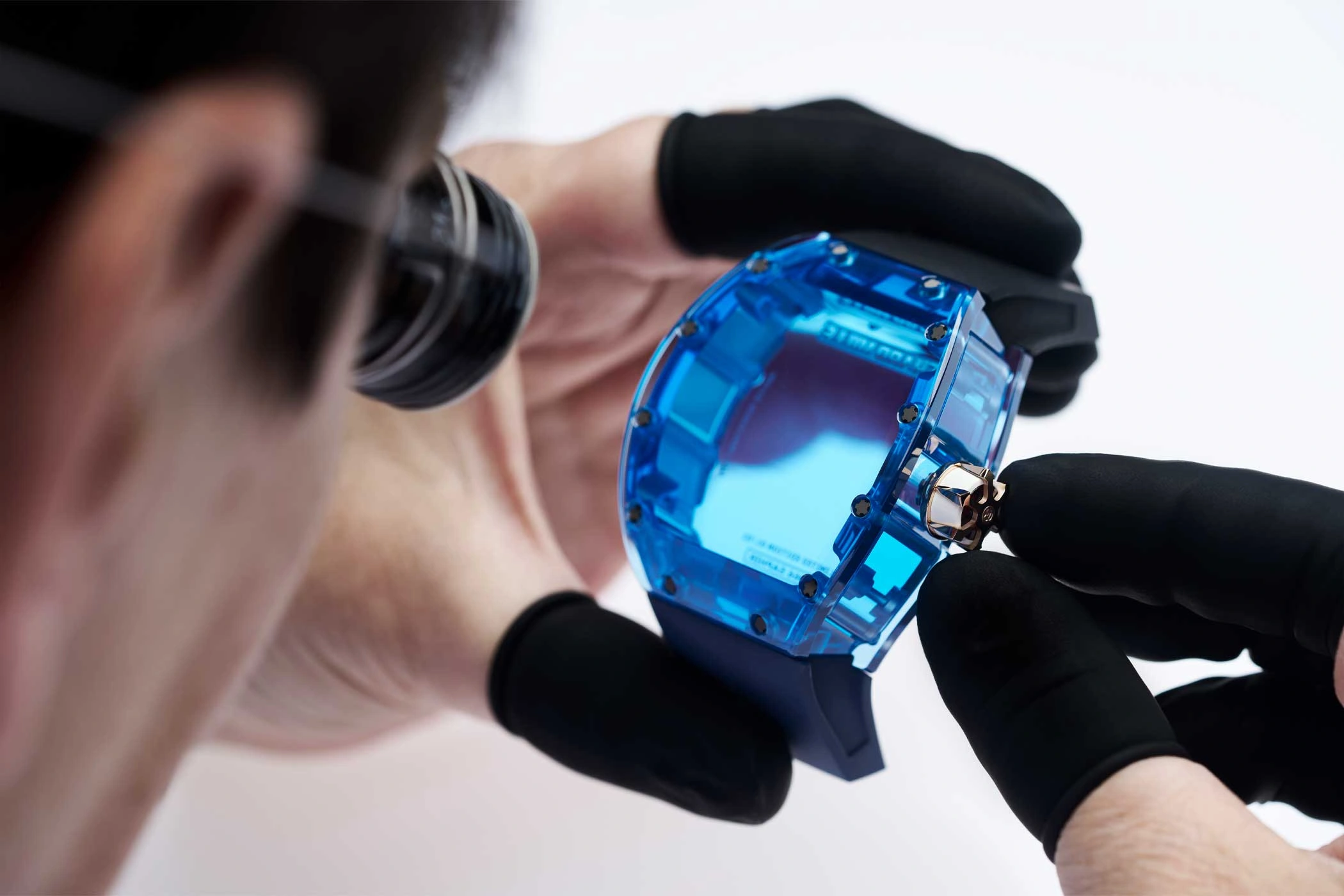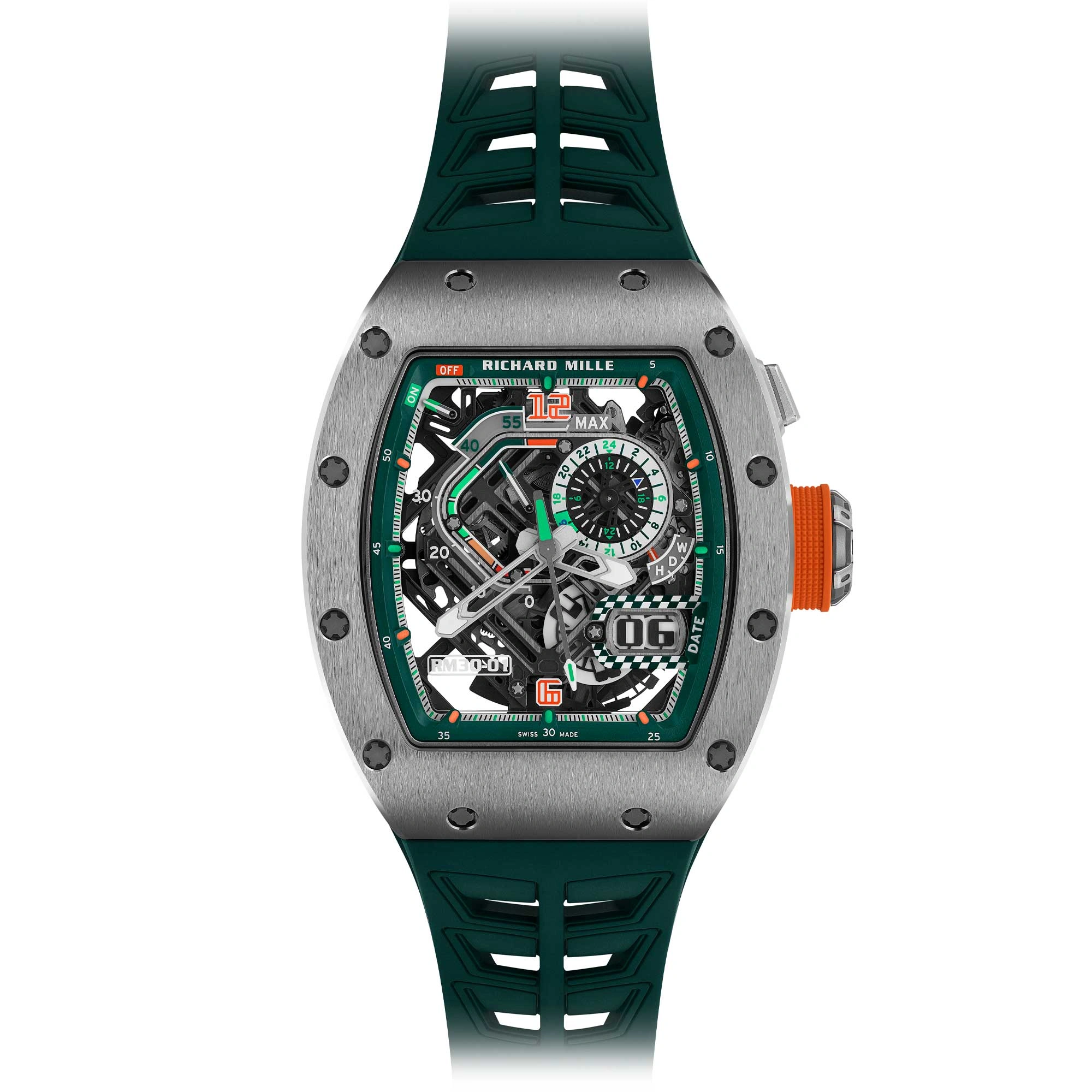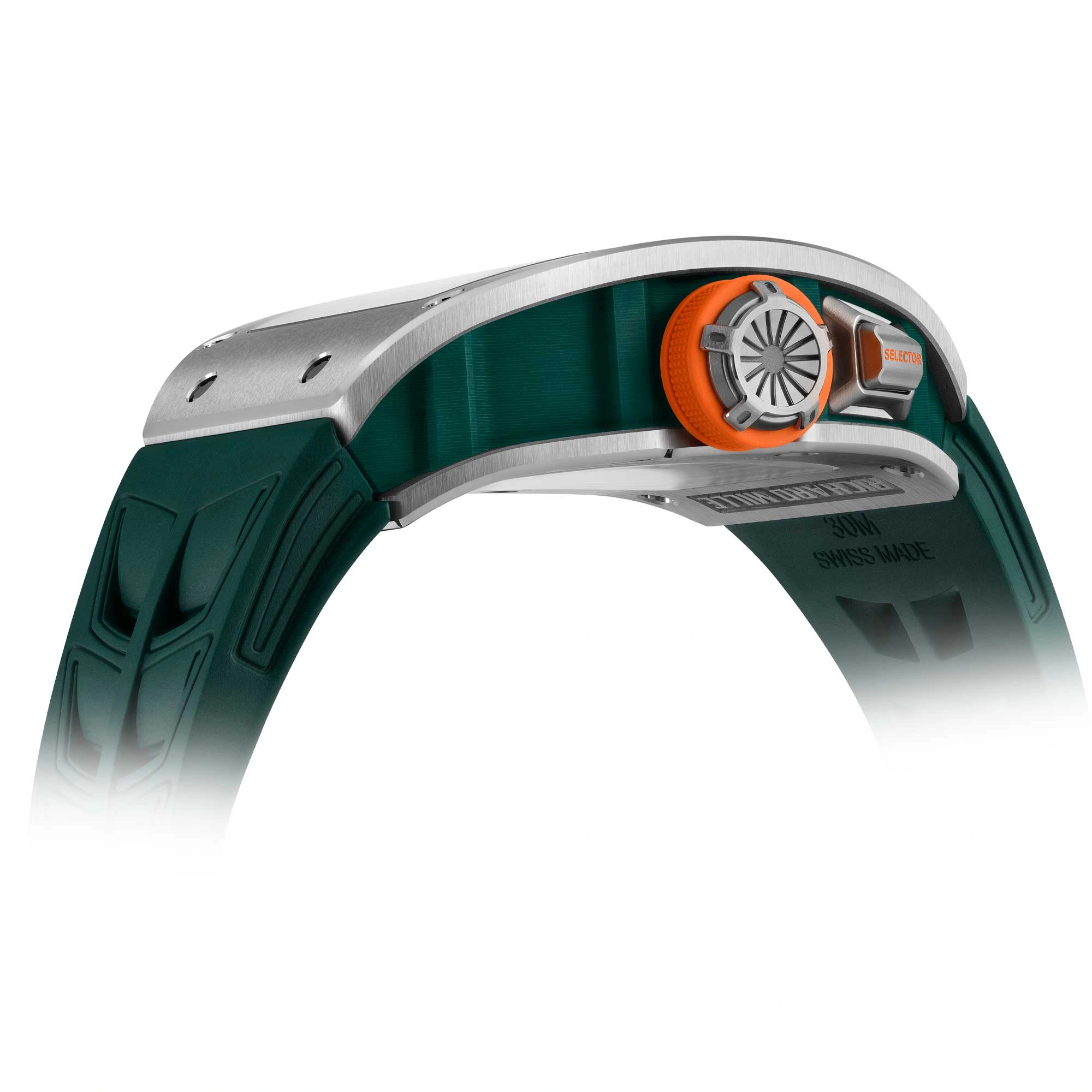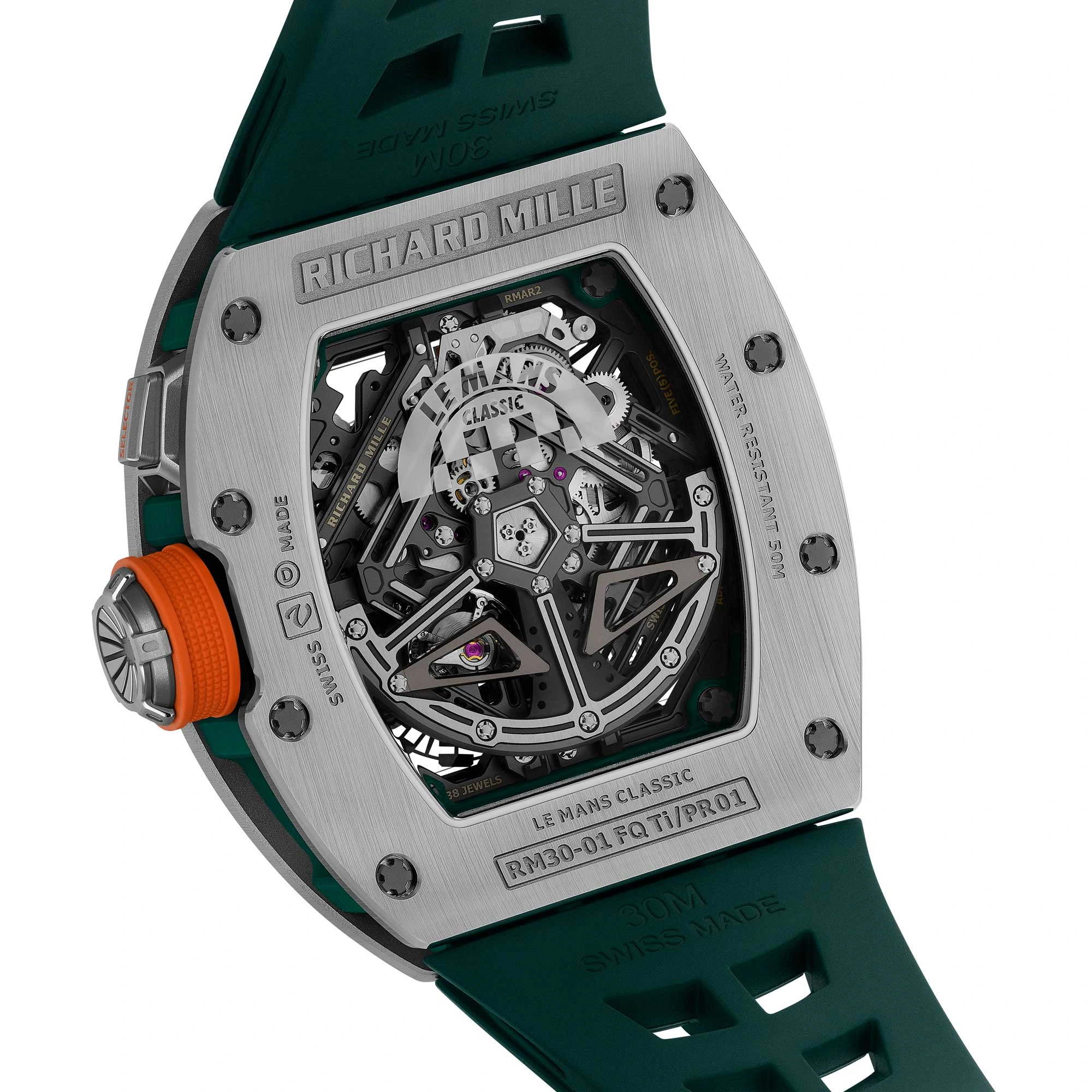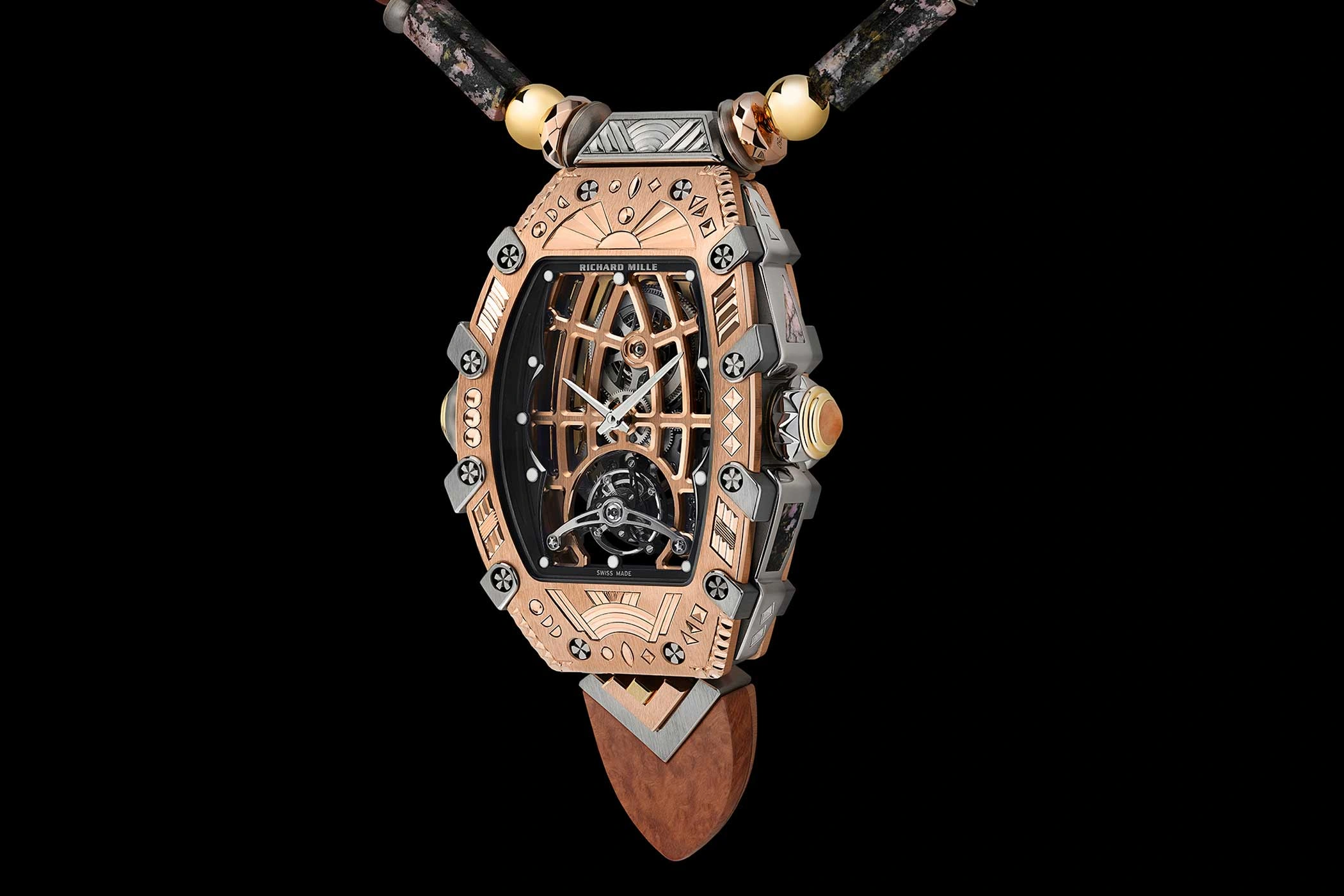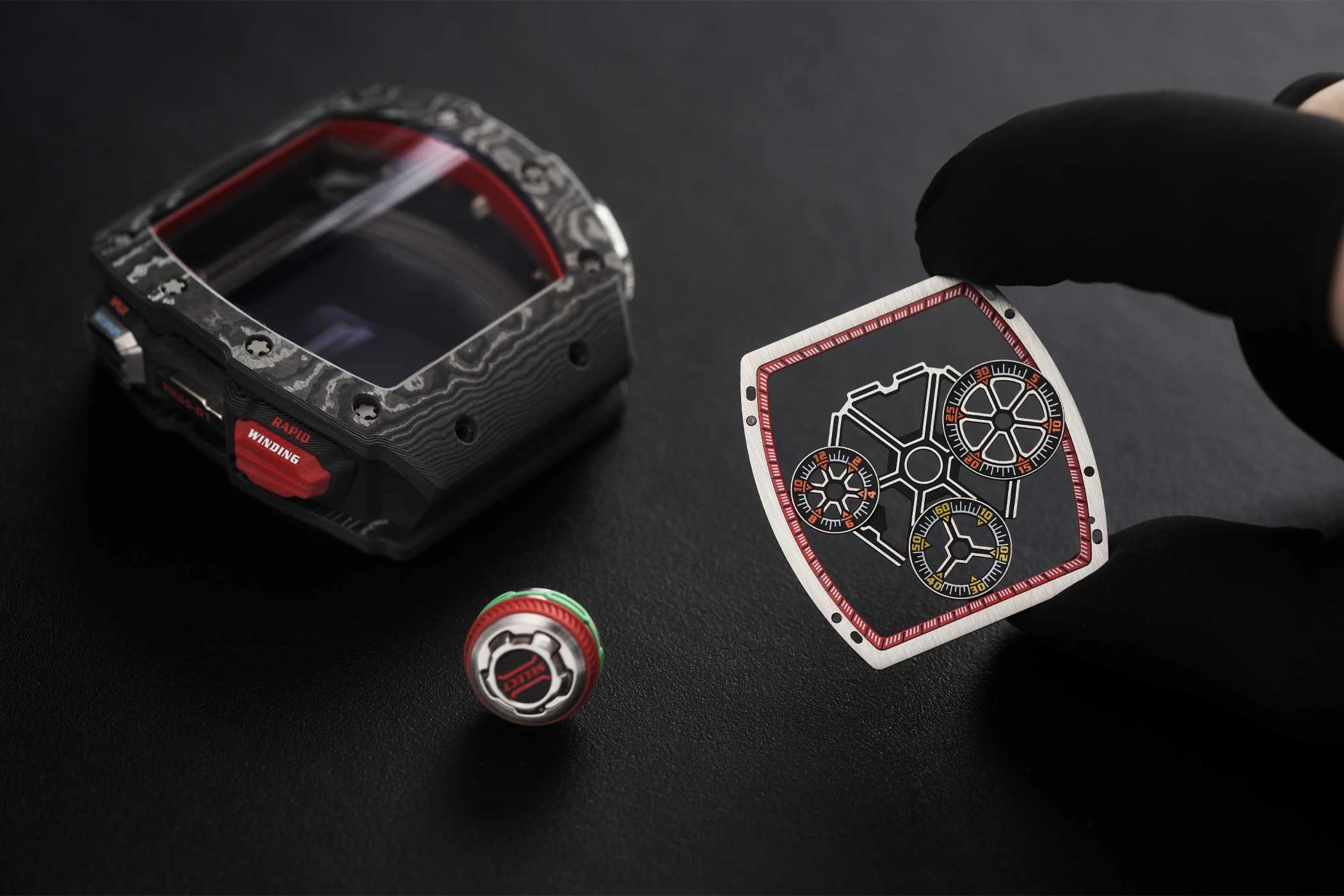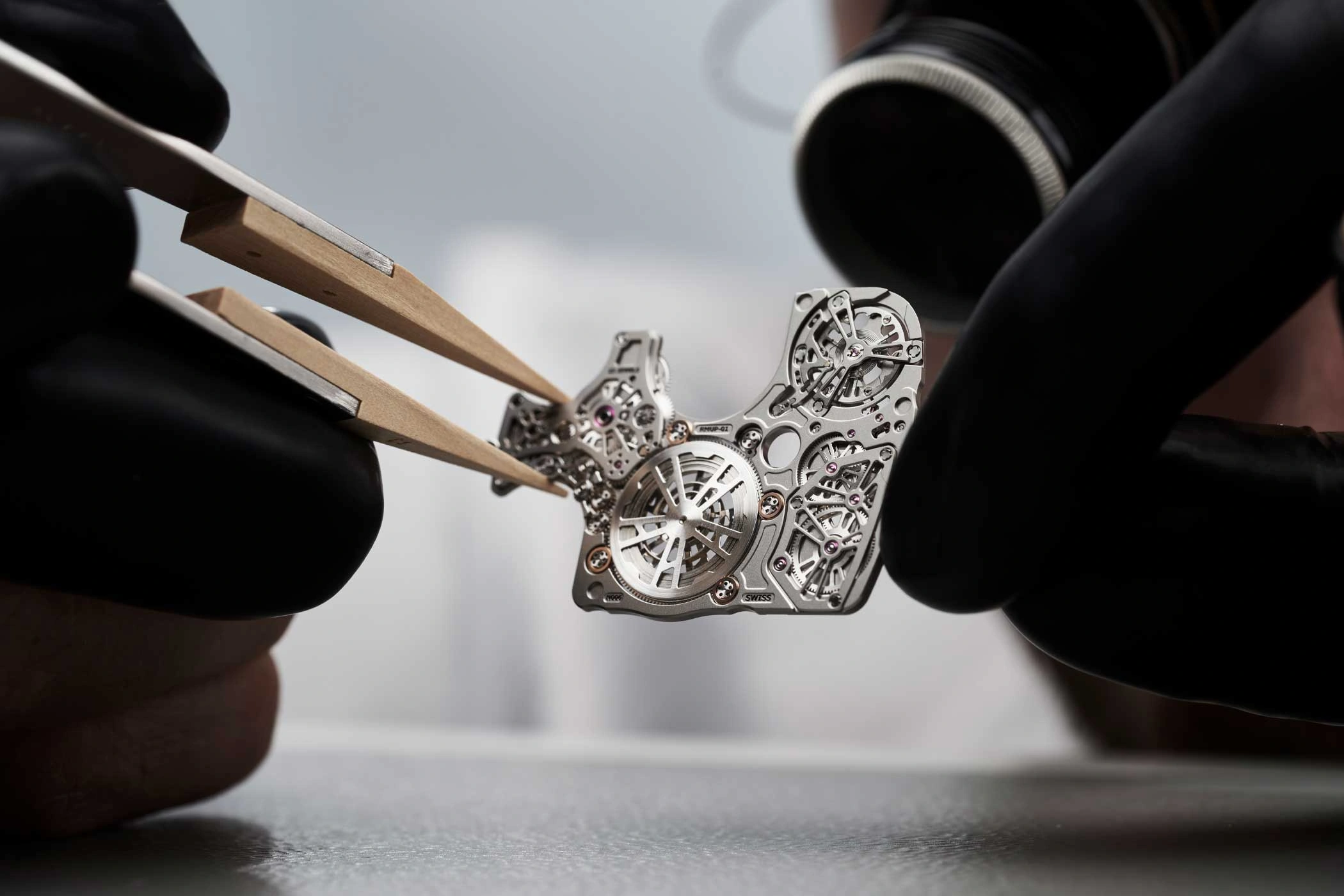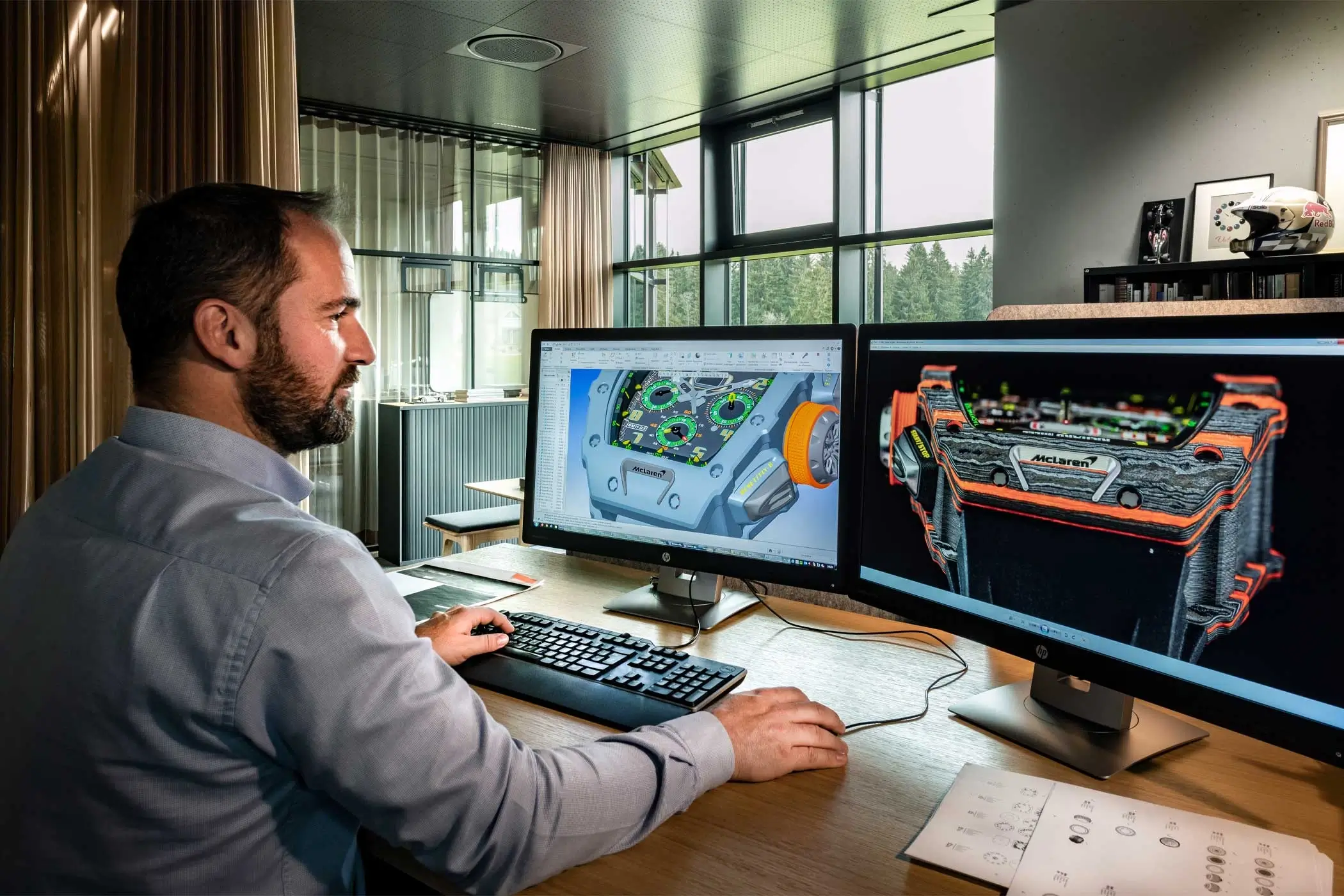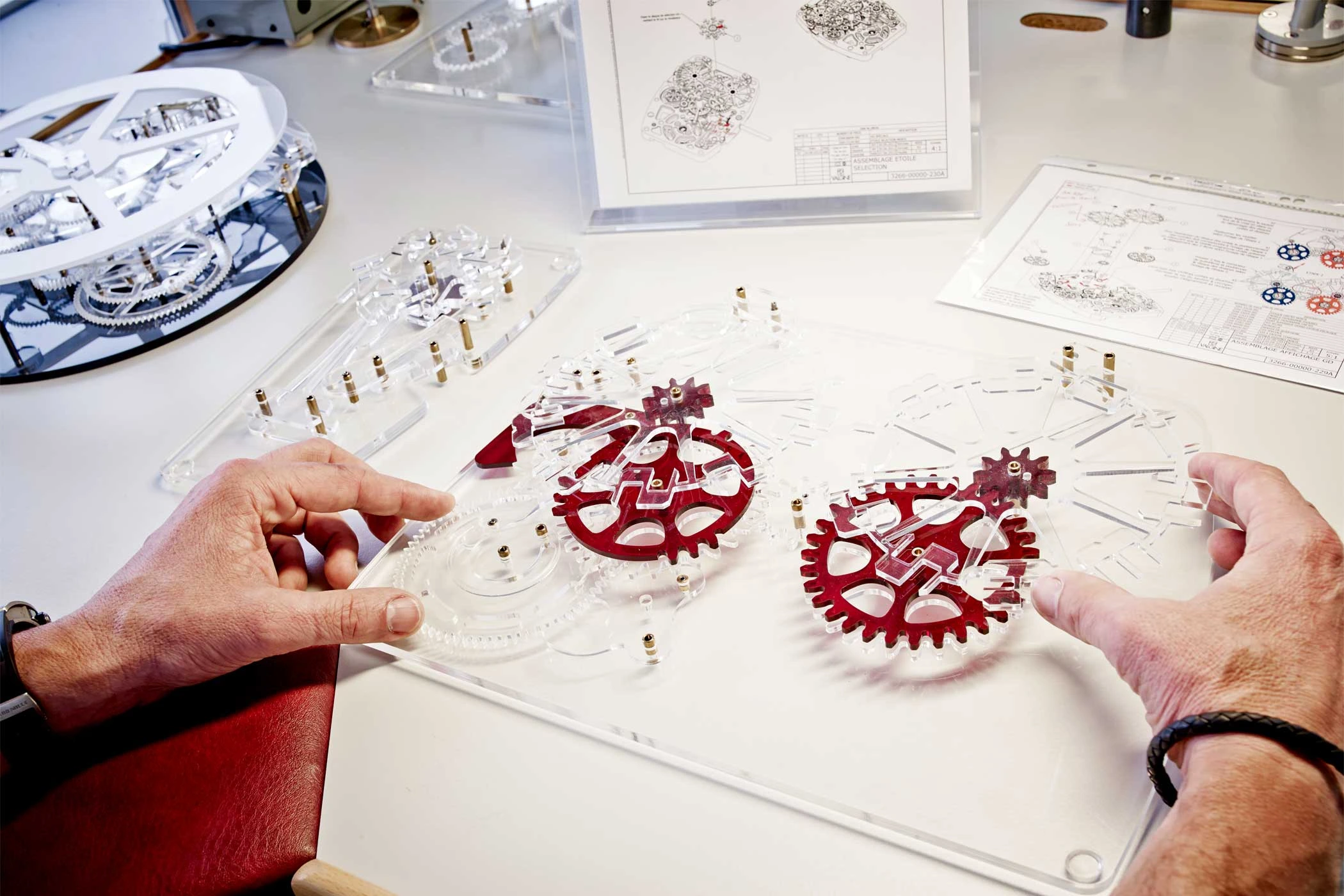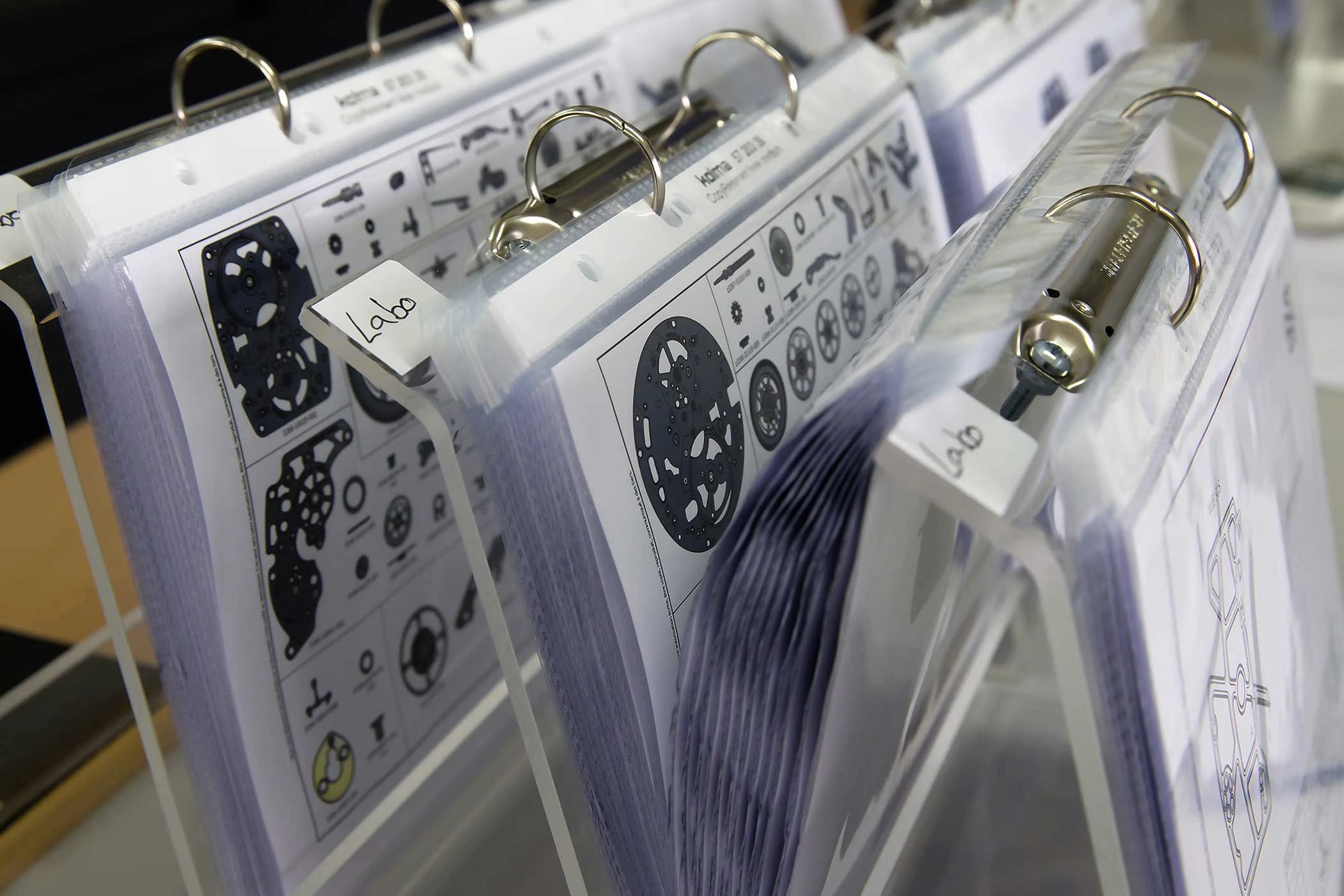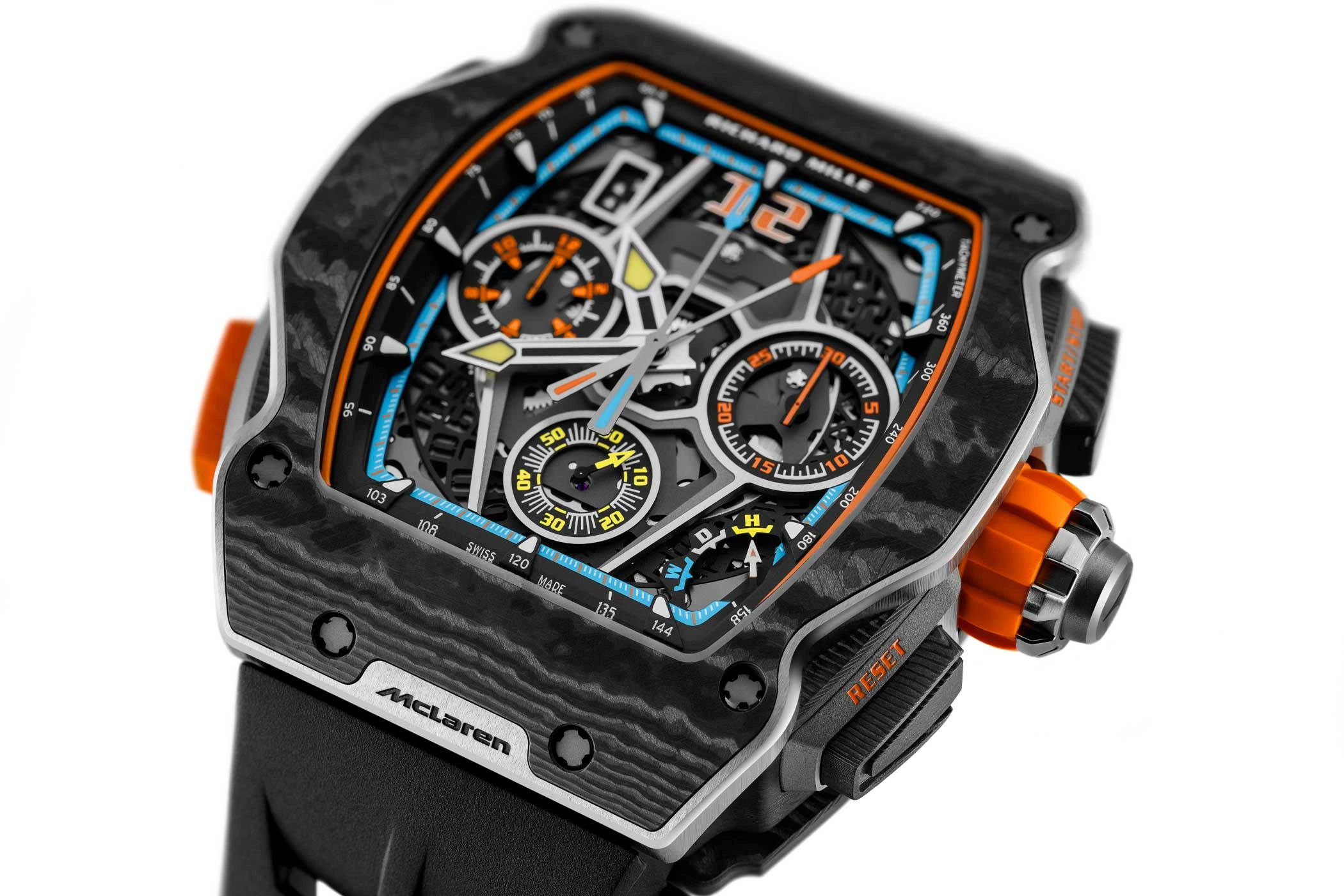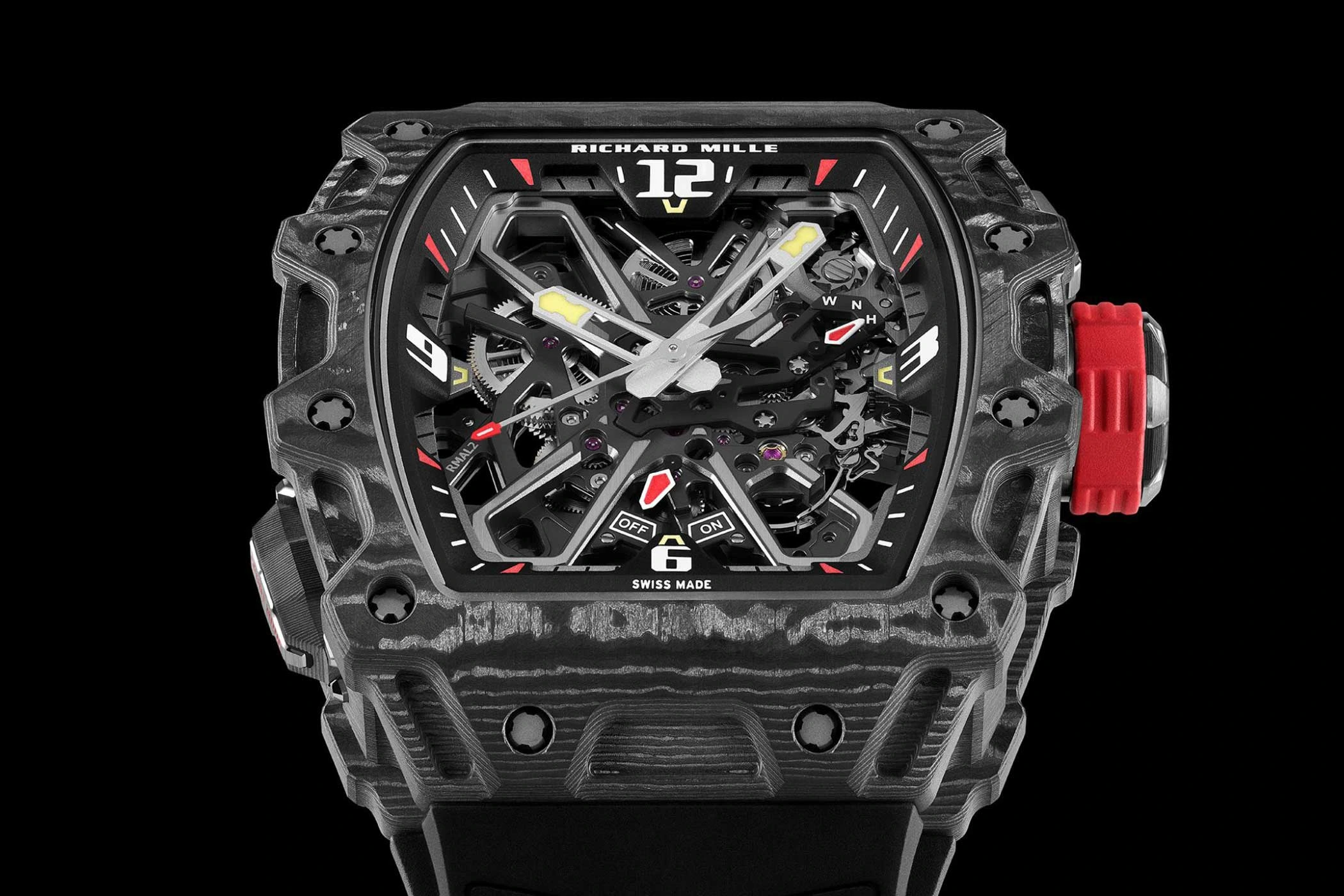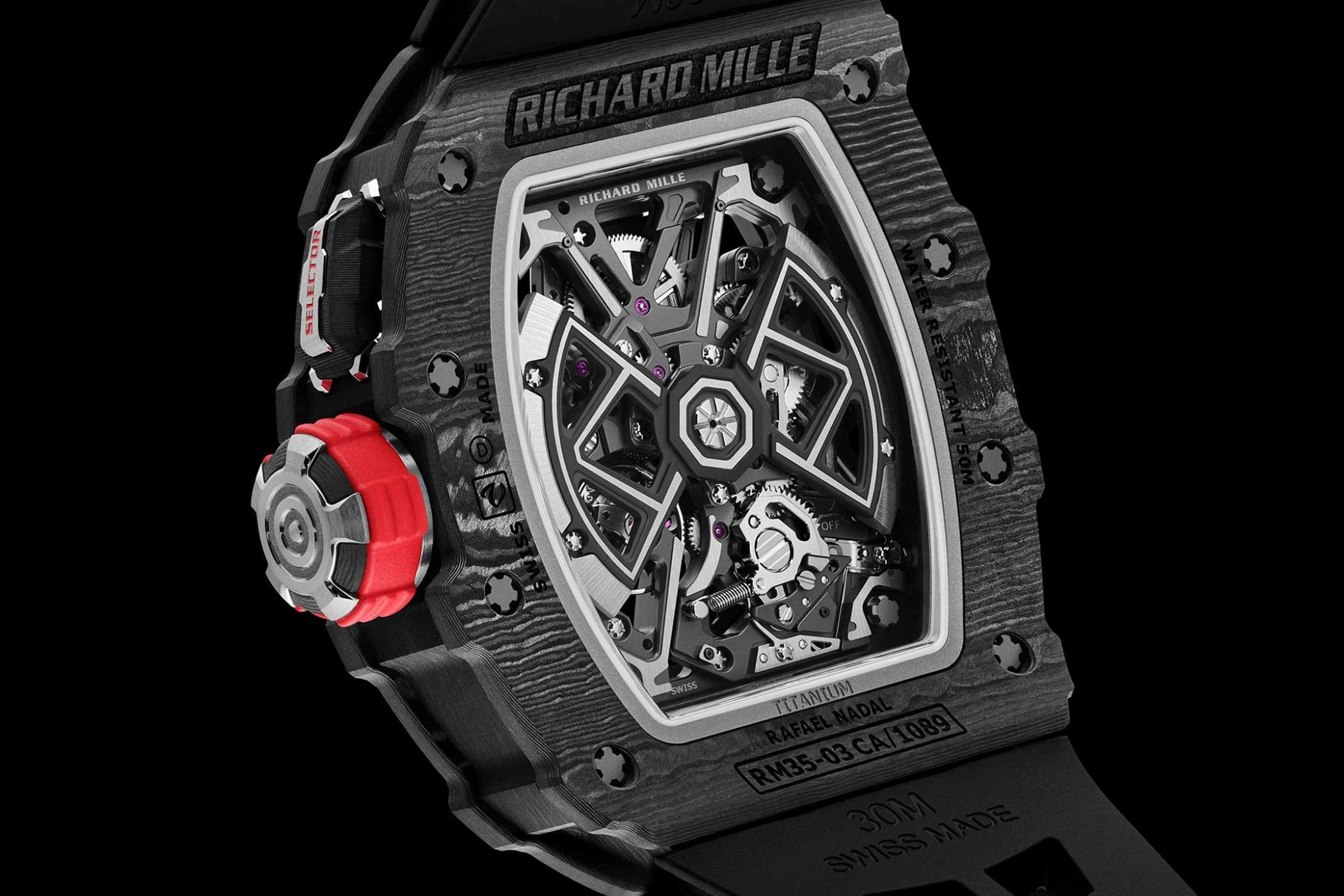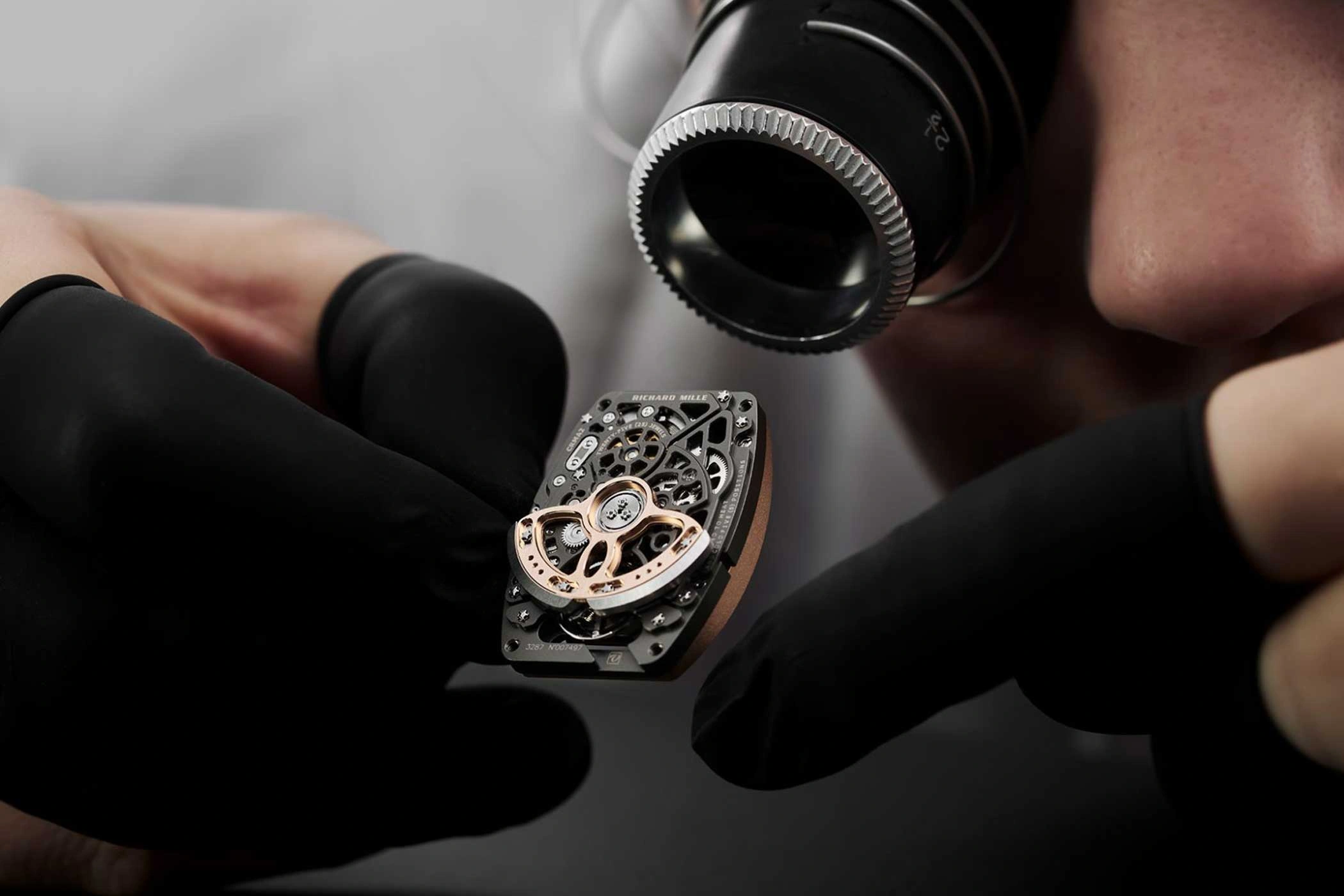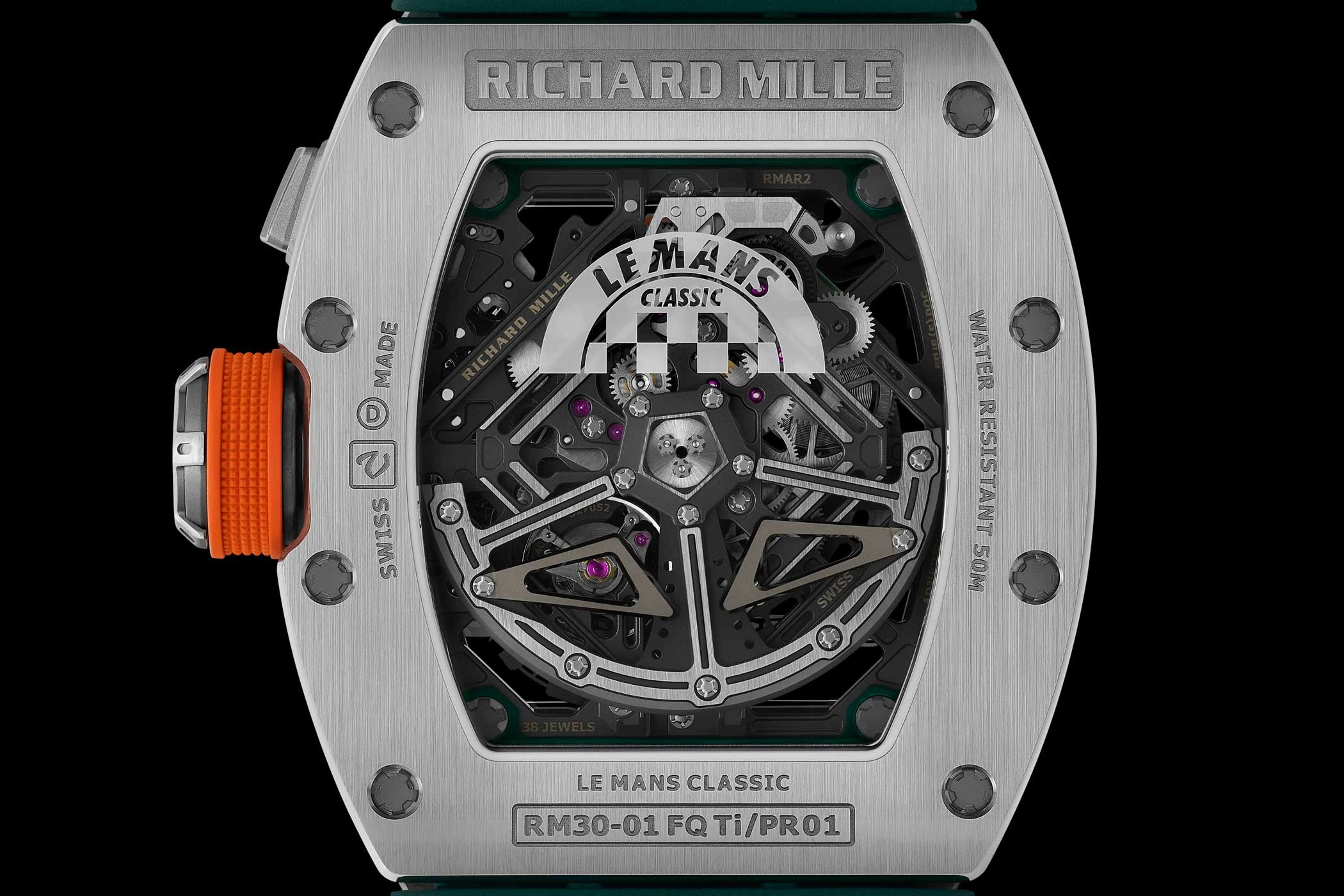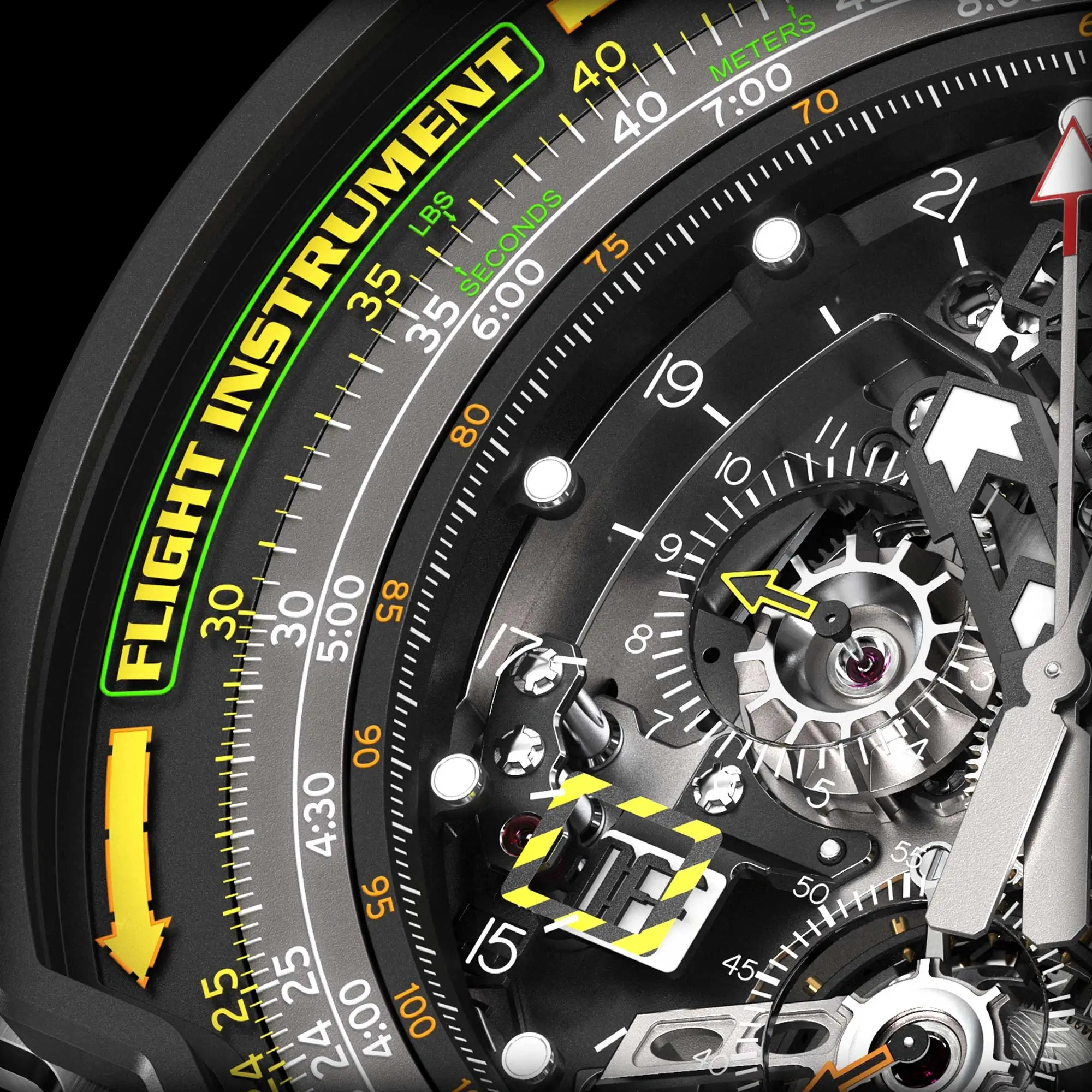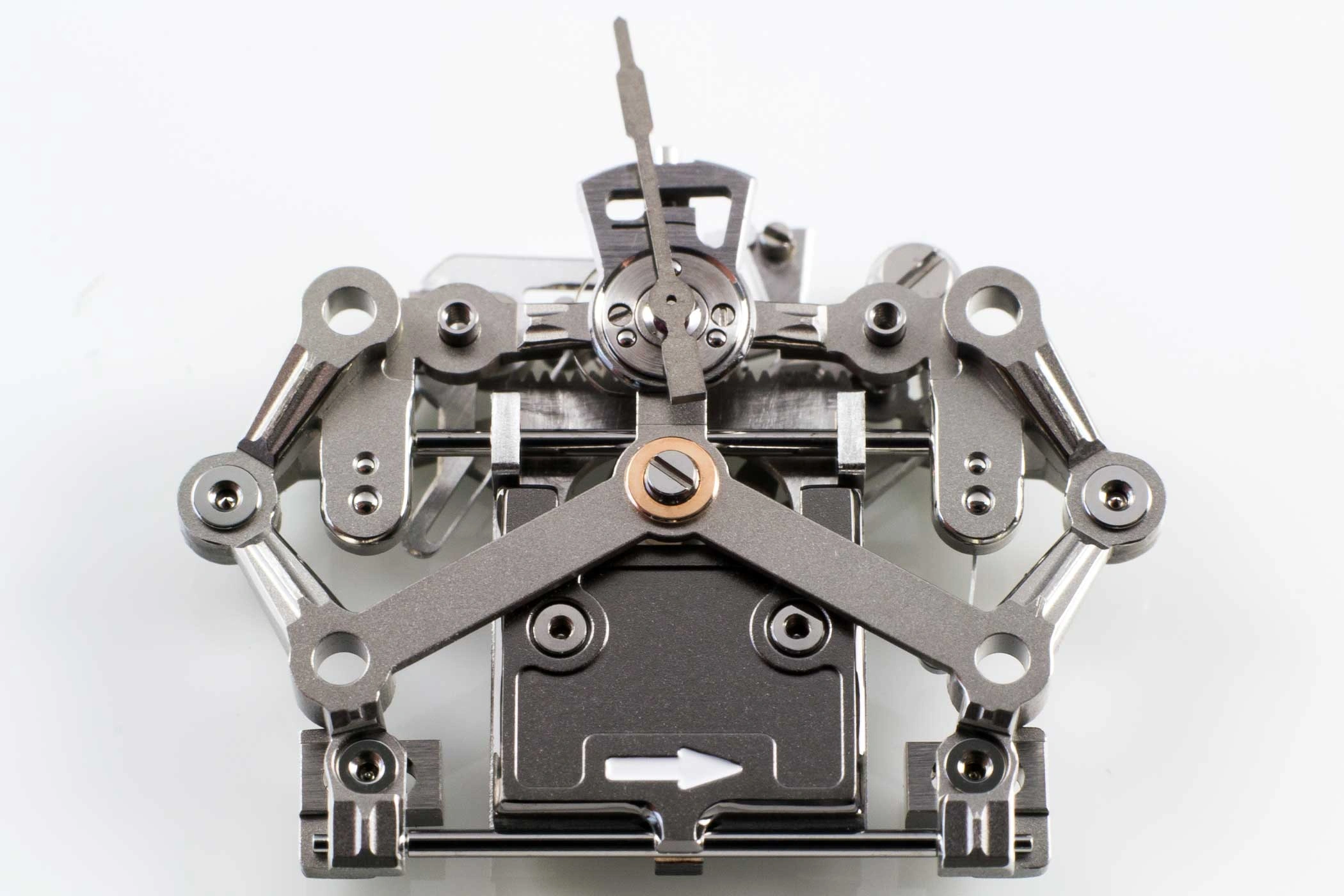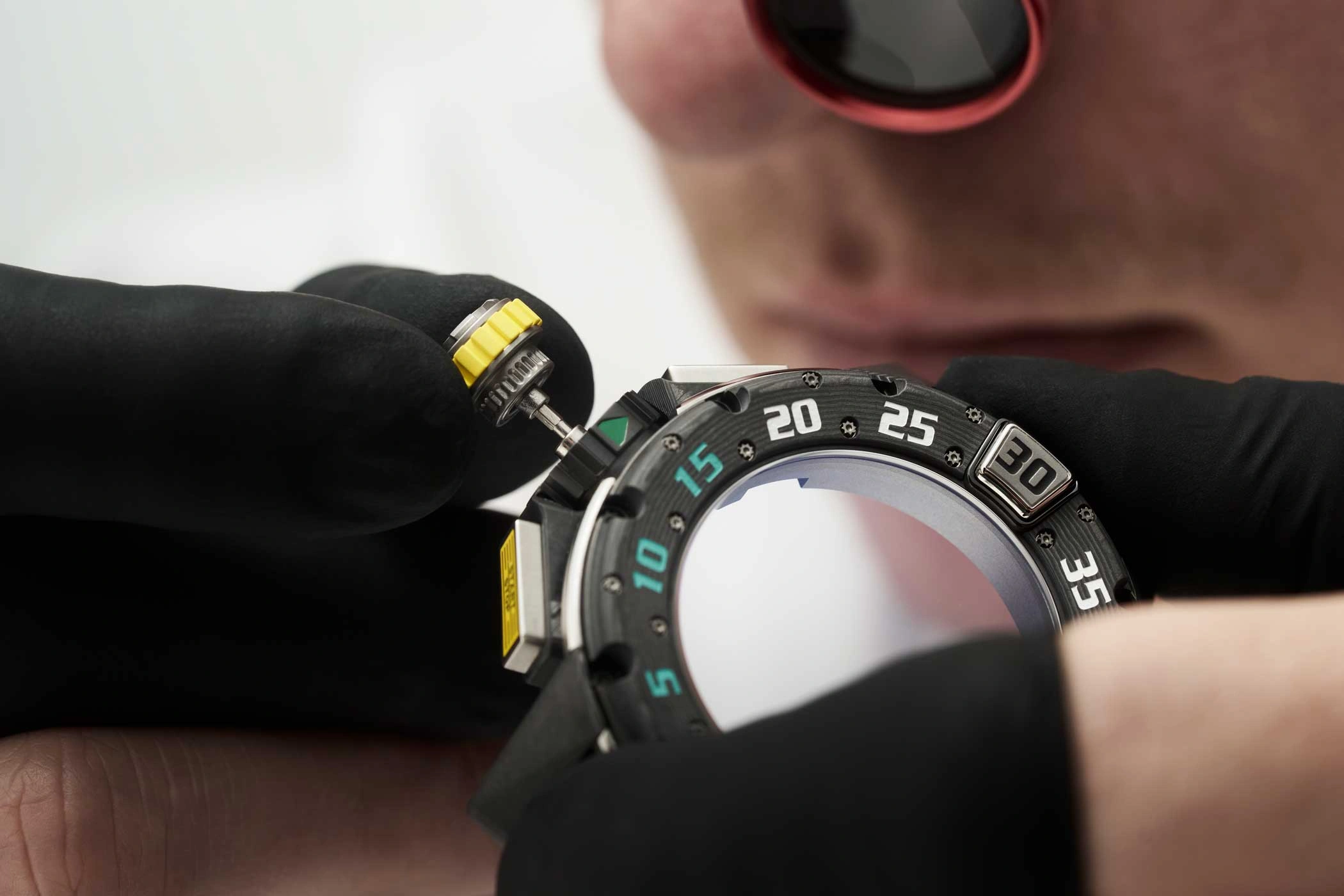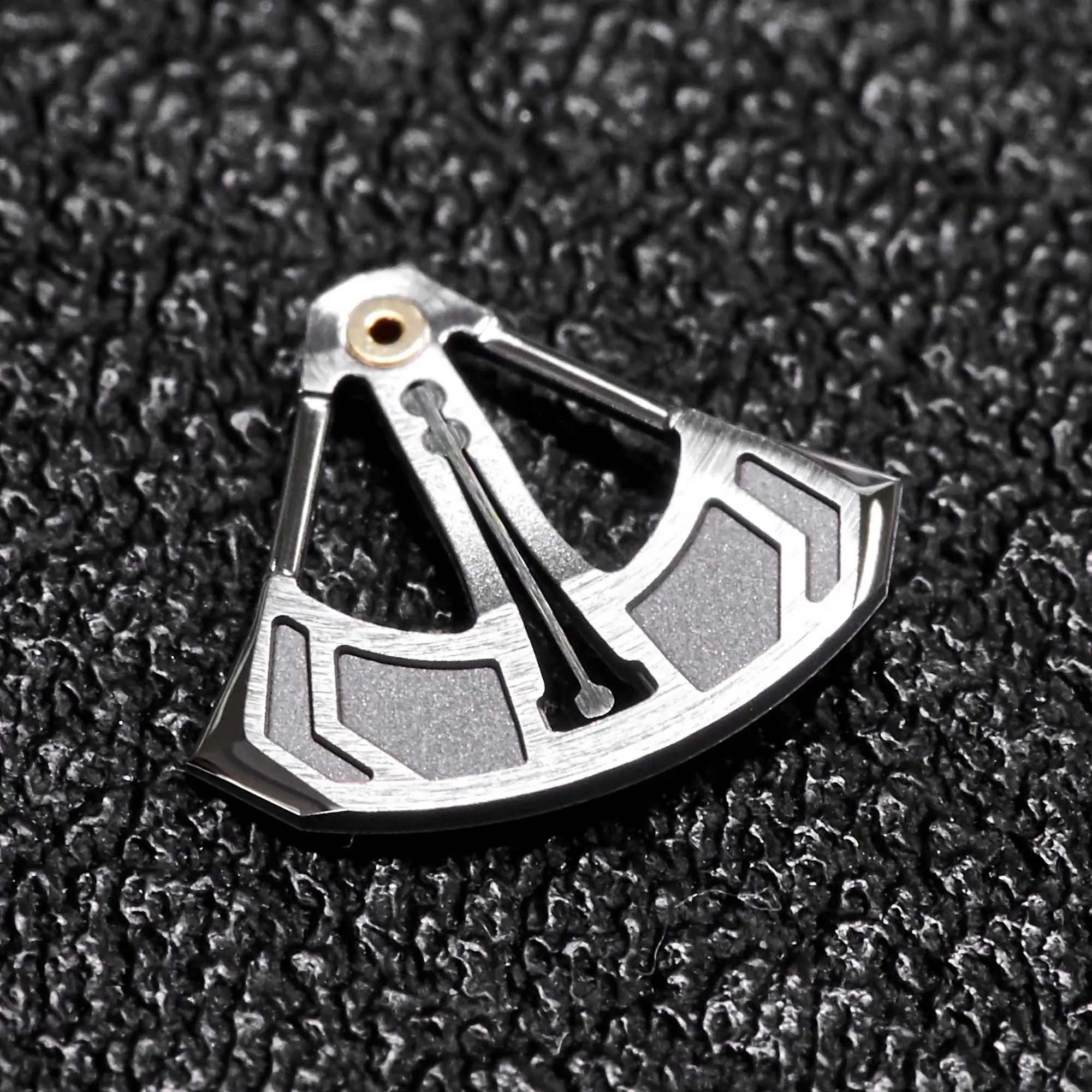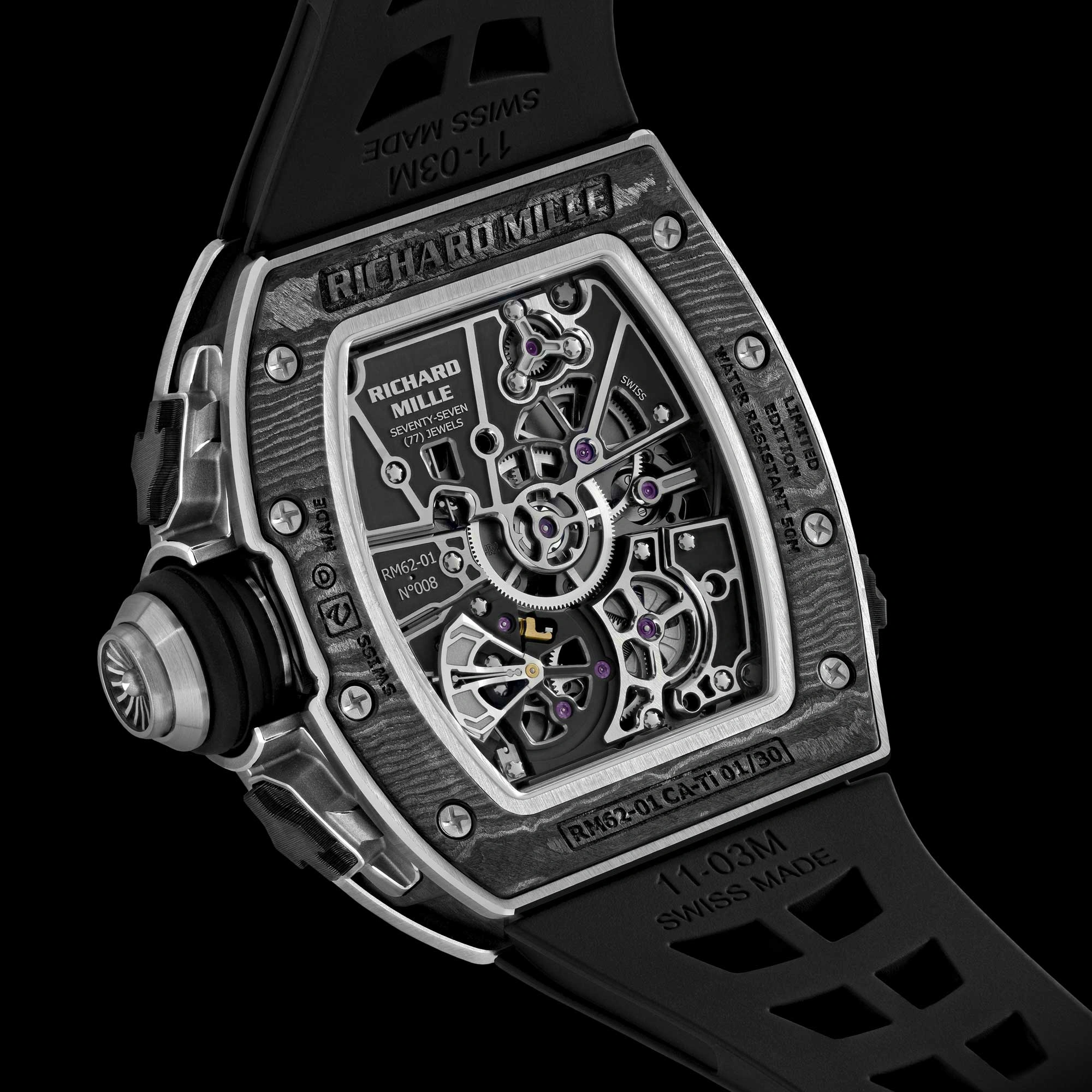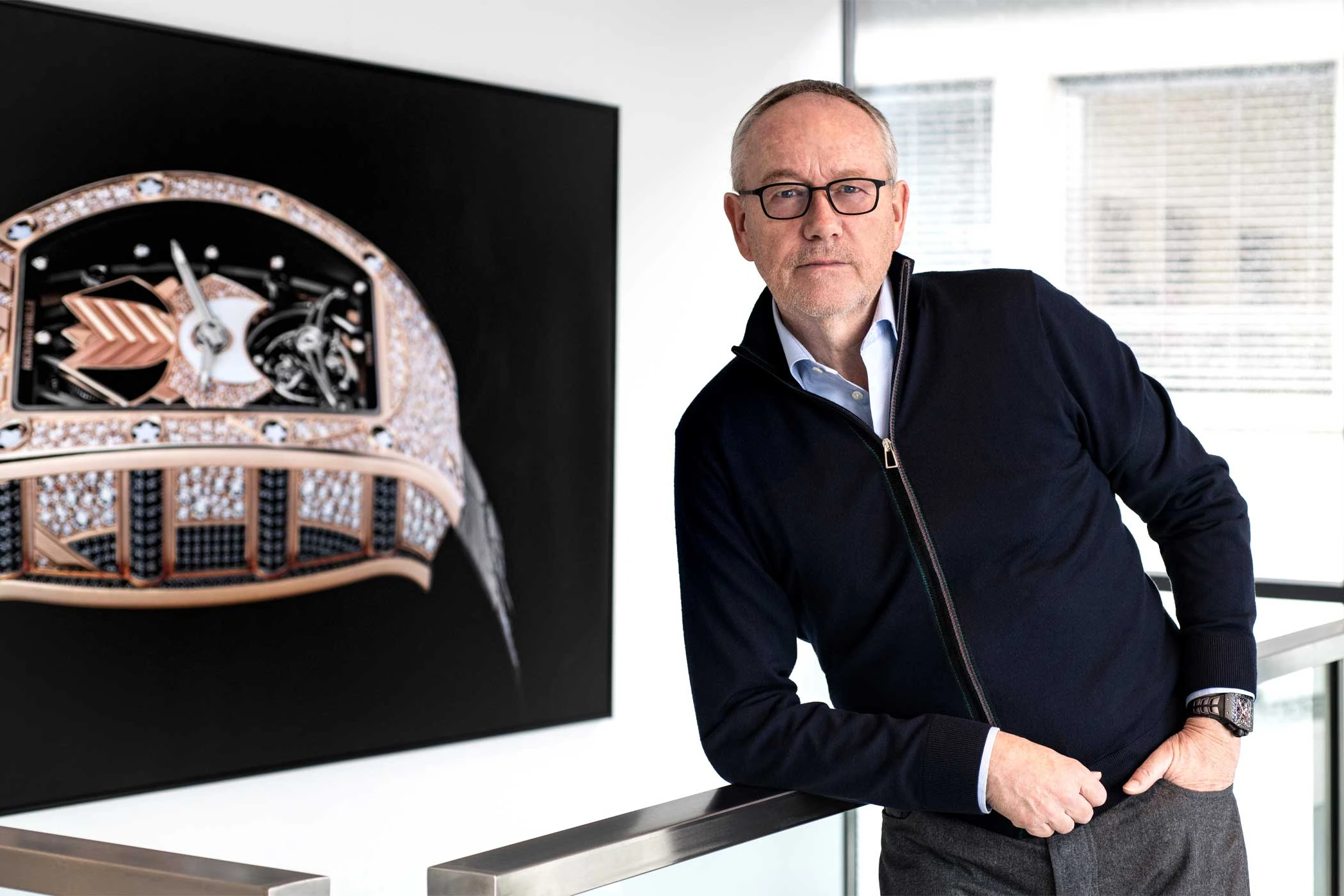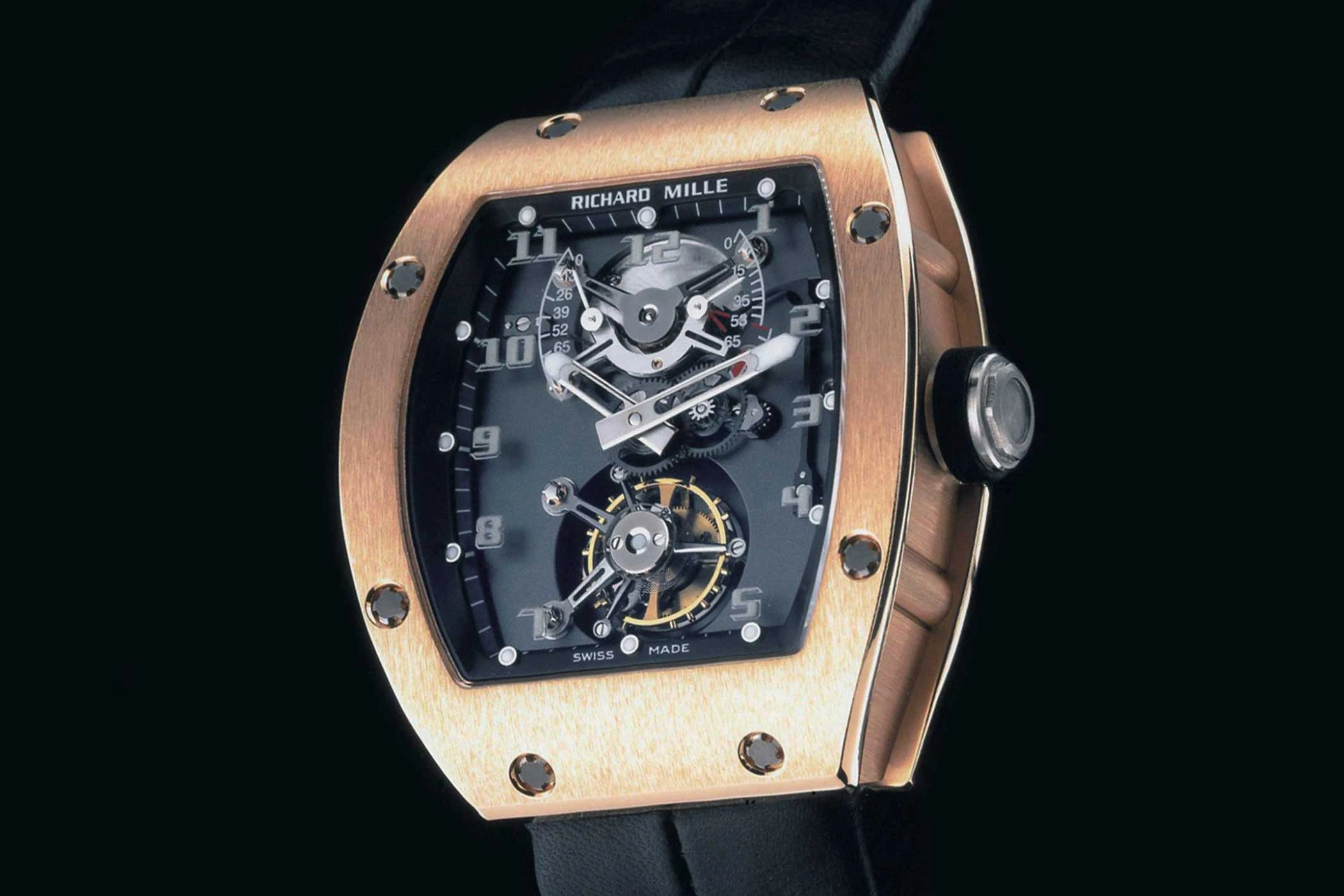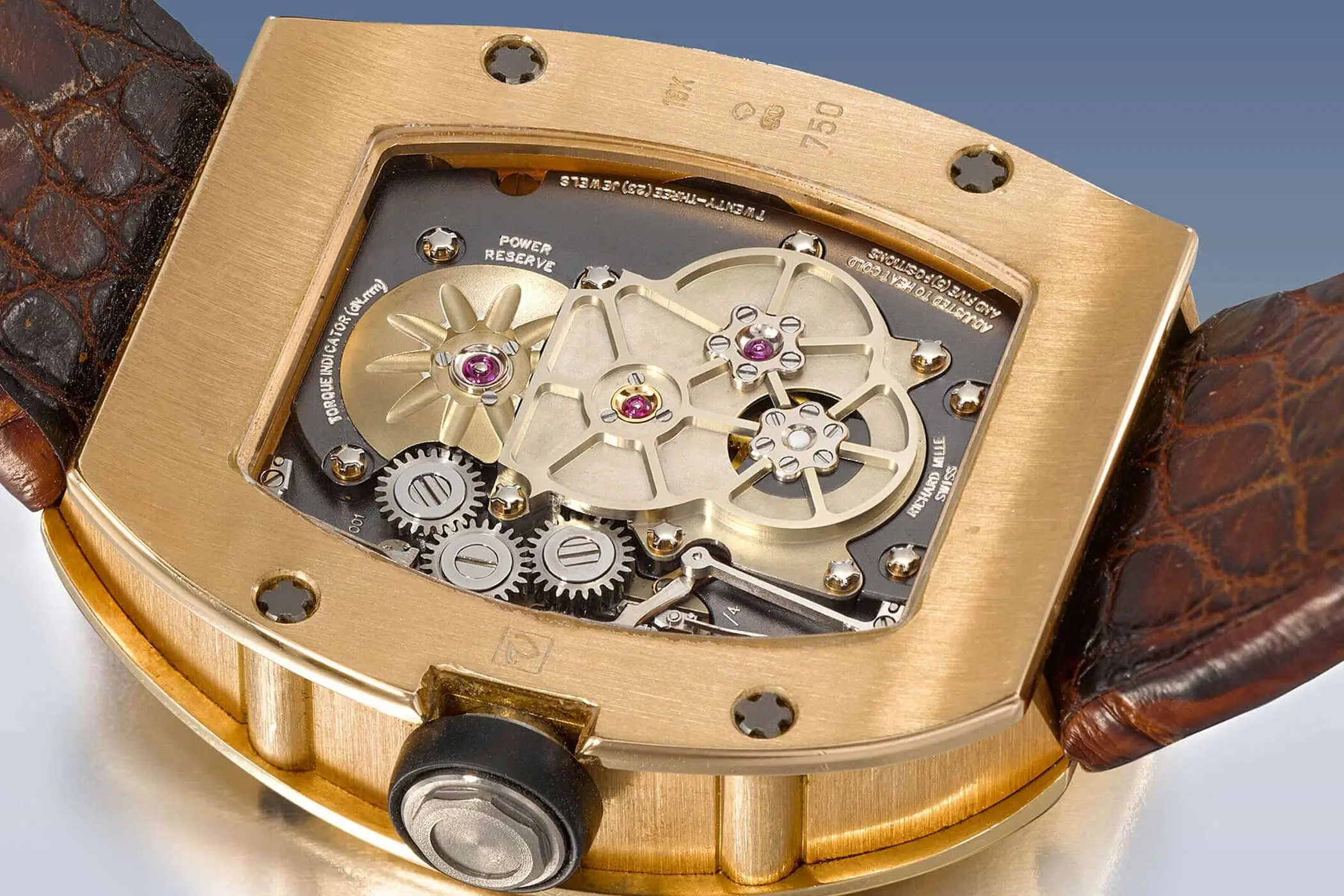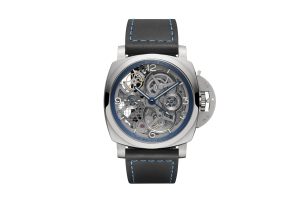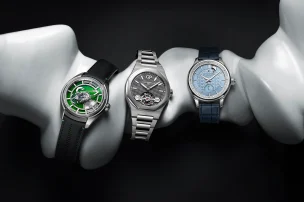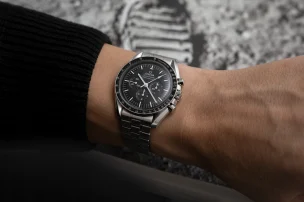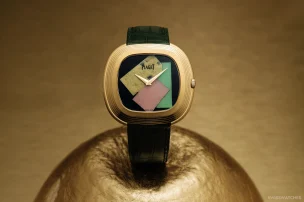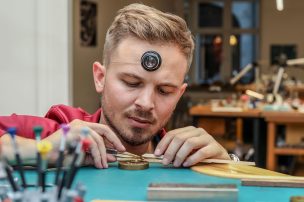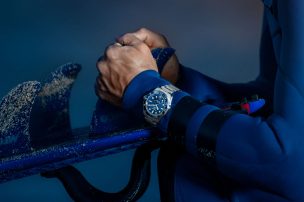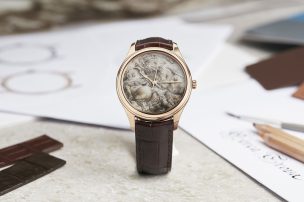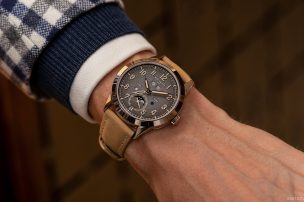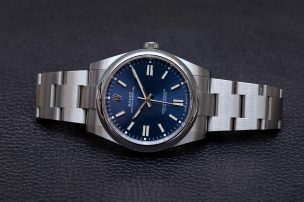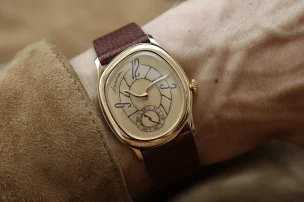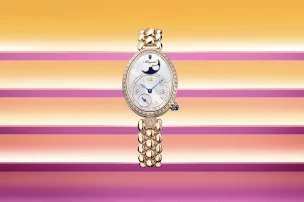
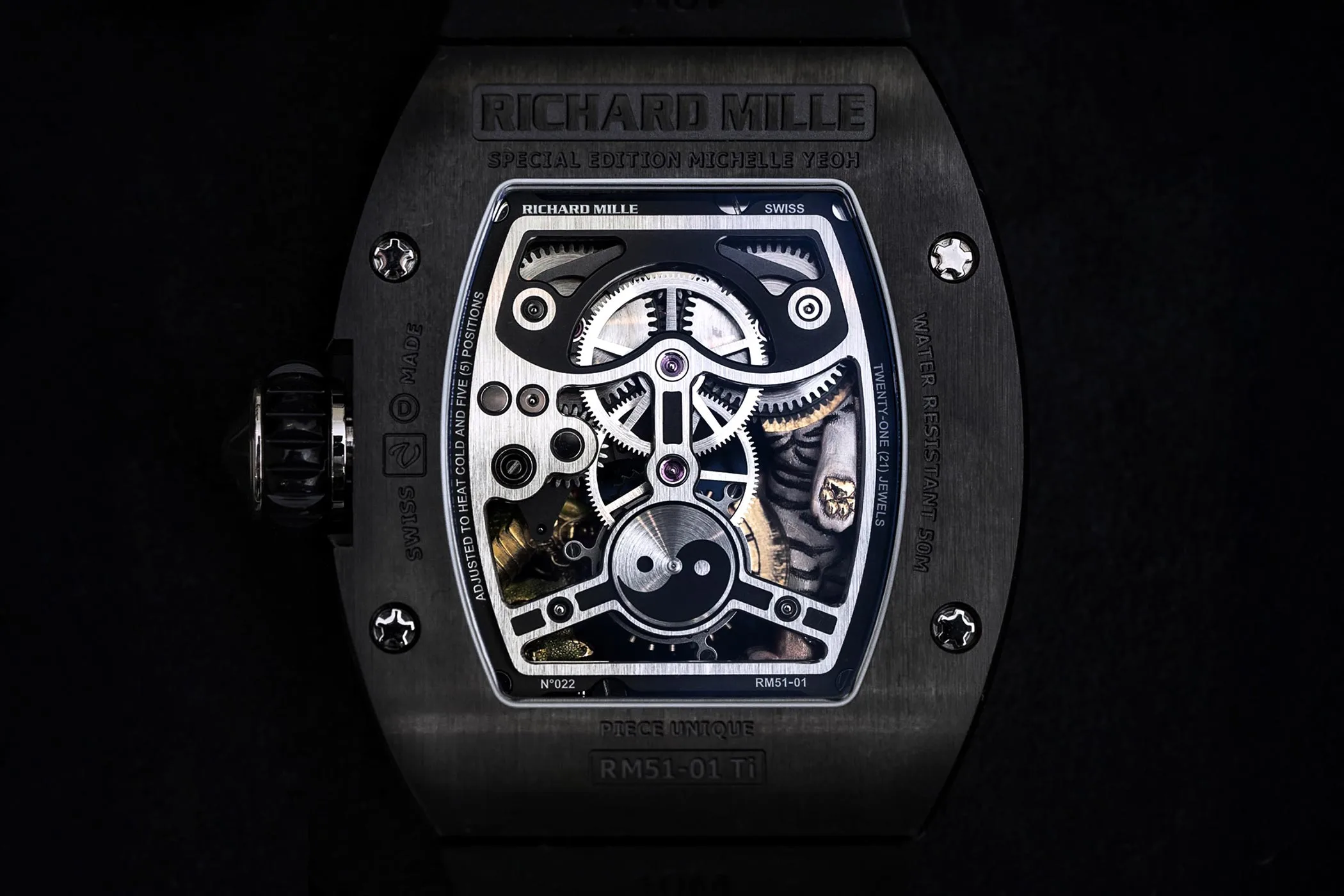
Richard Mille Is Keeping It Simple & Tough: A Closer Look At a Controversial Brand
Anyone with even a passing knowledge of the watch world will agree that ‘robust’ is a fitting description for Richard Mille’s timepieces. Just think of the RM 027 models, which withstand the impact speeds of over 200 km/h generated by tennis superstar Rafael Nadal. But simple? What has that got to do with the extravagant watches of this Swiss brand? After all, this ultra-exclusive manufacturer is renowned for its love of tourbillons, technical innovation, avant-garde design, and its use of high-tech materials such as titanium, ceramic, aluminium, vanadium, electroplasma alloys, coloured sapphire glass, and carbon fibre. ‘Simple’ hardly seems fitting.
Yet complex technology and materials don’t necessarily mean that handling must be delicate or complicated. Quite the opposite, as Richard Mille demonstrates.
For this Paris-headquartered company, even its most audacious timepieces are all about creating intuitive functionality that can keep up with the demands of their wearers at all times. Thanks to clever and thoughtful engineering, this is achieved with impressive success.
And although it may come as a surprise at first, Richard Mille follows the principle of ‘form follows function’ in its very own way: ‘The concept defines the components, the components do not define the watch.’
Extravagance Meets Practicality
I admit it: when it comes to Richard Mille, I’ve been a late bloomer. Until recently, I’d regarded the brand somewhat sceptically, out of the corner of my eye. That changed the day I was finally able to hold and try on the watches myself. Keith Millar, Head of Watchmaking at Richard Mille EMEA, proudly explained the specific features and technical details of the various models to me – with a gleam in his eye. Were it not for the matter of the price tag, I’d almost certainly have bought one on the spot.
Richard Mille – A Brand That Divides Opinion
To some, it is the flashy watch of the super-rich; to others, a status symbol for celebrities and influencers, the most extravagant of sports watches, or a high-performance timekeeper for elite athletes. And for many, it is, quite simply, an incredibly expensive watch.
And therefore, there’s the small matter of laying roughly 250,000 CHF on the counter. With an estimated annual production of around 5,500 watches – no official figures are released – that translates to an annual turnover of about 1.4 billion CHF. For a relatively young Swiss brand, that firmly places Richard Mille among the top ranks of luxury watchmakers.
Prestige and Expertise in Equal Measure
But for most Richard Mille owners, it’s about far more than prestige or flaunting material wealth. A closer look at the watches quickly reveals their innovative, technical, and material appeal – aspects true connoisseurs appreciate. These enthusiasts often refer to Richard Mille as a manufacture, though that’s not entirely accurate – even if the company can boast an impressive production depth of 80 per cent.
The movements, for instance, are developed and produced by Guenat SA Montres Valgine (GMV) in Les Breuleux. This company, which also handles distribution, has been in existence for over three generations and based in the Jura for more than 110 years. In 1986, it passed into the hands of Dominique Guenat, who went on to found the Richard Mille brand together with the namesake in 1999. The partnership between the two remains exceptionally close.
Nevertheless, Richard Mille does not consider itself a fully integrated manufacture. In the brand’s view that would require producing every single component entirely in-house, from A to Z.
Such unprompted self-awareness is a rarity in the watch industry, where the unprotected term ‘manufacture’ is often used rather generously.
Complex Constructions, Effortless Function
A purely aesthetic approach is out of the question for Richard Mille. Every screw, gear, spring, and lever must serve a precisely defined purpose and meet the highest standards. You won’t find complex mechanics merely for the sake of complexity in a Richard Mille watch. What you will find, however, are ingenious mechanisms whose usefulness in everyday life often comes as a surprise.
It is precisely these refinements and innovations that impress me. The designs offer practical, everyday benefits for the wearer through highly intricate concepts. Here are a few of these sophisticated constructions I’d like to highlight.
No More Pulling or Pushing the Crown, Thanks to the Function Selector
Some Richard Mille models are equipped with a function selector. Similar to a car’s gearbox, a push-button allows the wearer to choose between winding, neutral, and hand-setting functions. An indicator on the dial shows the selected mode: W (Winding), N (Neutral), and H (Hands). The chosen mode is then activated simply by turning the crown – eliminating the need for multiple crown positions.
This protects your fingernails and nerves – since the selected mode is always visible – and, importantly, the winding stem. It also prevents the all-too-common mistake of forgetting to push or screw the crown back in, which could otherwise result in water damage.
Self-Adjusting Winding Speed: The Butterfly Rotor
Richard Mille’s patented butterfly rotor consists of two halves and can be switched into sport mode via a push-button.
In this mode, the winding efficiency is reduced, preventing damage to the winding system from overloading caused by vigorous arm movements during sports such as tennis or golf. Whether sport mode is activated can be checked on the dial at the six o’clock position.
Variable Geometry for Variable Winding
The variable-geometry rotor also adapts the winding system to the wearer’s level of physical activity.
Each side of the rotor features six recesses that allow adjustment of the so-called ribs, altering the rotor’s inertia. This either accelerates the winding process when the wearer is relatively inactive or slows it down during high-movement activities.
No Overwinding Thanks to a Disengaging Rotor
Once the mainspring is fully tensioned, this mechanism automatically halts the winding process or disconnects the rotor from the winding system. In doing so, it prevents overwinding of the barrel and enhances the accuracy of the movement.
Additionally, this mechanism is linked to the power-reserve indicator, optimising winding control and maintaining a constant torque and consistent performance to ensure the best possible chronometric results. It took Richard Mille’s engineers four years to develop the disengaging rotor.
Slide Rule for Pilots Thanks to the E6-B Bezel
The E6-B is an analogue flight computer, also known as a ‘whiz wheel’. Although modern digital alternatives are available today, it continues to be in use in pilot trainings. It allows aviators to perform various in-flight calculations, such as fuel consumption, flight time, and airspeed.
At Richard Mille, this function is handled by a bi-directional rotating bezel and an inner ring with graduated scales, allowing various calculations to be performed directly on the watch itself.
Inertial Weight for the G-Force Display
Richard Mille’s engineers conducted extensive studies to develop a G-sensor capable of measuring the acceleration forces experienced by the watch during sporting activities or motor racing.
The principle is based on an inertial weight guided along two rails. The movement uses the measured data to adjust the power reserve, balance amplitude, and other parameters that influence accuracy, ensuring the watch maintains precision even under extreme conditions.
No Mishandling Thanks to the Locking Crown
Richard Mille’s patented locking crown protects both the chronograph pushers and the crown itself from accidental operation – an essential feature under water or in situations involving heavy shocks. The system consists of a ring surrounding the crown; turning it locks or unlocks the pushers and the crown. A green or red arrow indicates whether the mechanism is engaged.
Rotating Oscillating Weight for a Discreet Alarm
Richard Mille’s vibration alarm is driven by a specially designed white-gold element within the movement. Its frequency is set at 5,400 vibrations per minute, providing a noticeable yet unobtrusive sensation without disturbing the movement’s operation.
The alarm is activated via a push-button and can be set to the minute over a 24-hour period, with a maximum vibration duration of twelve seconds. This practical innovation took five years of research and development to complete.
Richard Mille: The Result of a Friendship
Behind this force of innovation lies a wealth of combined expertise. The brand’s namesake, Richard Mille, began his career in the watch and jewellery industry after completing a marketing degree in Besançon, France’s traditional watchmaking city.
In 1988, he met Dominique Guenat of the family-owned company Montres Valgine. This meeting would prove to be pivotal. Their connection went far beyond business: a shared passion for cars, aviation, and mechanical engineering evolved into a deep friendship.
When Richard Mille set out to create the watch of his dreams, Guenat, who had become CEO of Montres Valgine in 1991, was by his side. Together they founded their own brand in 1999, with the goal of pushing the technical and aesthetic boundaries of watchmaking – without abandoning the rich traditions of Swiss haute horlogerie.
Pushing Boundaries – The Best of Both Worlds
‘The brand stands with one foot in the 19th century, staying true to the great Swiss tradition of hand-crafted, highly complex movements, and with the other firmly in the 21st century,’ explains Dominique Guenat.
From the outset, the founders aimed directly for the pinnacle of the luxury watch market. In just a few short years, they established themselves as one of its boldest players, the enfant terrible of haute horlogerie.
The very first watch, launched in 2001, set the tone immediately. There was nothing modest or understated about it. The RM 001 Tourbillon made it crystal clear what Richard Mille stood for — technically, aesthetically, and financially. Support came from Renaud et Papi, the renowned movement specialist and subsidiary of Audemars Piguet, which still holds a ten per cent minority stake in Richard Mille today.
Richard Mille Debuts With a Bang and Keeps Making Noise
The RM 001 remains the foundation on which many of the brand’s designs are built. Its combination of a curved tonneau-shaped case, a dial with a striking three-dimensional effect, and a movement visible from both front and back was daring for its time.
And it didn’t debut with a simple three-hand model or chronograph. No – the very first watch was a tourbillon, the ultimate complication in 2001. Its price, an eye-watering 145,000 euros, made it the most expensive tourbillon of its era, and the audience at Baselworld 2001 could hardly believe what they were seeing.
Their astonishment only grew when, during a live demonstration, the watch was deliberately thrown onto the floor of the exhibition hall to prove its robustness. Such audacity was almost unthinkable in the conservative watch industry of two decades ago with reactions ranging from shock to admiration.
What has remained ever since is the brand’s fearless approach to challenging conventions, in the most positive sense, a spirit now embodied in over 130 models and countless devoted admirers.
The brand’s following is as diverse as distinguished : wealthy collectors and true watch aficionados, flamboyant new elites, and global superstars from the worlds of sport and culture. Among them you’ll find Rafael Nadal, Bubba Watson, Shelly-Ann Fraser-Pryce, John Malkovich, Pharrell Williams, and Jessica von Bredow-Werndl.
Richard Mille: The Next Generation
Today, founders Richard Mille and Dominique Guenat have passed the baton to the next generation. Amanda Mille serves as Brand and Partnership Director, while her brother Alexandre Mille is Commercial Director. Cécile Guenat leads Creative and Product Development, and Maxime Guenat is Managing Director of the Montres Valgine manufacture. Together, the quartet champions continuity in the world of ultra-luxury watchmaking – where simplicity and robustness coexist, and where Richard Mille remains unlike any other watch in its class.
